
Concept cars are, without a doubt, the lifeblood that fuels the automotive industry’s ceaseless drive for innovation. They serve a crucial role, acting as a barometer for consumer sentiment, gauging whether the public will embrace or, perhaps, shun a new vehicle direction. In an era where consumers are increasingly engaged in the evolution of automotive design, the significance of these visionary prototypes has only grown, influencing the future of how automakers conceive and craft vehicles, much like the Oldsmobile Aurora once did.
While hundreds of successful concept cars have graced the auto show circuits, captivating audiences and paving the way for production models, there exists a fascinating, often mysterious, parallel universe of equally brilliant concepts that, for a myriad of reasons, never transitioned from the dazzling show stand to the open road. These are the cars and trucks that possessed immense potential, unique propositions, and groundbreaking features, yet, regrettably, never found their way into the hands of eager buyers.
Join us as we embark on an in-depth journey through the archives of automotive ambition, peering into the stories behind some of the most intriguing concept cars that, due to various technical, economic, or strategic factors, never saw their time on car lots. We’ll explore the ingenious design choices, the bold engineering endeavors, and the sheer creativity that pushed the boundaries of what was thought possible, leaving behind a legacy of ‘what-ifs’ and inspiration for generations to come.

1. **Dodge Copperhead**There’s no denying the visceral appeal of the Dodge Viper, a true American icon that shattered the 400 horsepower barrier in an era when such figures were almost mythical. However, its lofty price tag and uncompromising practicality for everyday driving meant it remained an aspirational dream for many. Enter the Dodge Copperhead, a captivating sports car concept unveiled in 1997, designed to offer a more attainable and practical alternative to its formidable stablemate.
With a sleek, modern, and decidedly fun aesthetic, the Copperhead concept was powered by a 2.7-liter V6 engine, typical of the era, delivering a respectable 200 horsepower. Crucially, it maintained a rear-wheel-drive layout, promising an engaging driving experience. This lightweight design and spirited powertrain echoed the successful formula that Mazda had masterfully applied with its Miata years earlier, suggesting a clear and compelling market niche.
Given Dodge’s successful run in the 1990s, it remains a curious enigma why Chrysler ultimately chose not to release this promising sports car. The market for a more accessible, fun-to-drive performance car would undoubtedly have been robust, and enthusiasts, eager for a slice of the Dodge performance pie at a more palatable price, would have likely snapped them up with enthusiasm. The Copperhead stands as a testament to a missed opportunity, a captivating vision that never quite materialized.
Car Model Information: 2005 Dodge Viper SRT10
Name: Dodge Copperhead
Caption: Walter P. Chrysler Museum
Manufacturer: Chrysler Corporation
Aka: Dodge Concept Car,Dodge Concept Vehicle
Production: 1997 (1 built as prototype)
Designer: John Herlitz
Class: Sports car
BodyStyle: Roadster (automobile)
Platform: Dodge Viper
Layout: FR layout
Engine: Chrysler LH engine,DOHC,V6 engine
Powerout: 220 hp
Abbr: on
Transmission: manual transmission
Wheelbase: 2794 mm
Length: 4242 mm
Width: 1829 mm
Height: 1262 mm
Weight: 1295 kg
Sp: us
Categories: All articles with specifically marked weasel-worded phrases, Articles with short description, Articles with specifically marked weasel-worded phrases from December 2010, Dodge concept vehicles, Short description is different from Wikidata
Summary: The Dodge Copperhead, later unofficially renamed as Dodge Concept Car or Dodge Concept Vehicle, was a concept car created by Dodge as a slimmed-down version of the Dodge Viper for buyers who couldn’t afford the Viper’s $75,000 cost.
Get more information about: Dodge Copperhead
Buying a high-performing used car >>>
Brand: Dodge Model: Copperhead
Price: $68,942 Mileage: 6,011 mi.
Read more about: Remember These? 13 Wild ’90s Concept Cars Only True Auto Experts Could Recall!
2. **Audi Avus**The Audi Avus stands as a landmark concept car, making a striking debut in 1991 and immediately capturing attention with its revolutionary approach to automotive construction. Its most defining characteristic was an innovative aluminum body, a pioneering move in lightweight vehicle design that hinted at the future direction of Audi’s engineering philosophy, particularly its commitment to ‘Vorsprung durch Technik’ – advancement through technology.
Beyond its cutting-edge lightweight chassis, the Avus boasted a mid-mounted W-12 engine, a formidable powertrain capable of producing around 420 horsepower. This ambitious mid-engine layout, coupled with its sleek design, promised a unique and exhilarating driving experience that drew inspiration from classic racing cars, blending high performance with breathtaking aesthetics. The sharp lines and futuristic look solidified its status as a visual masterpiece.
Despite its groundbreaking design and impressive technical specifications, the Audi Avus never made the leap to production. However, its influence was profound and enduring. It laid crucial groundwork for future Audi models, particularly in the widespread adoption of aluminum spaceframe technology seen in subsequent production cars. The Avus remains a powerful symbol of Audi’s unwavering commitment to engineering excellence and visionary design, a blueprint for innovation that transcended its concept status.
Car Model Information: 2005 Audi S4 4.2 quattro
Name: Audi Avus quattro
Manufacturer: Audi
Aka: Audi Avus
Production: Concept car
Predecessor: Audi 100S Coupe Speciale
Successor: Audi Rosemeyer
Class: Concept car
BodyStyle: coupé
Layout: Mid-engine design
Engine: Volkswagen W12 engine
Transmission: Manual transmission
Length: 4470 mm
Abbr: on
Width: 2006 mm
Weight: 1,250 kg (2,755 lbs)
Designer: J Mays,Martin Smith (designer)
Categories: Articles with short description, Audi concept vehicles, Commons category link is on Wikidata, Commons link is locally defined, Rear mid-engine, all-wheel-drive vehicles
Summary: The Audi Avus quattro was a concept sports car made by the German car manufacturer Audi. It was first introduced at the 1991 Tokyo Motor Show. The Avus quattro had an aluminium space frame, which helped reduce weight. This second showing of the new aluminium architecture (after the quattro Spyder a month before) paved the way for the mass-produced aluminium A8 in 1994.
Get more information about: Audi Avus quattro
Buying a high-performing used car >>>
Brand: Audi Model: Avus
Price: $8,890 Mileage: 123,392 mi.
Read more about: Don’t Even Think About It: 12 Chain Restaurants That Serve Up Disappointment, Not Dinner
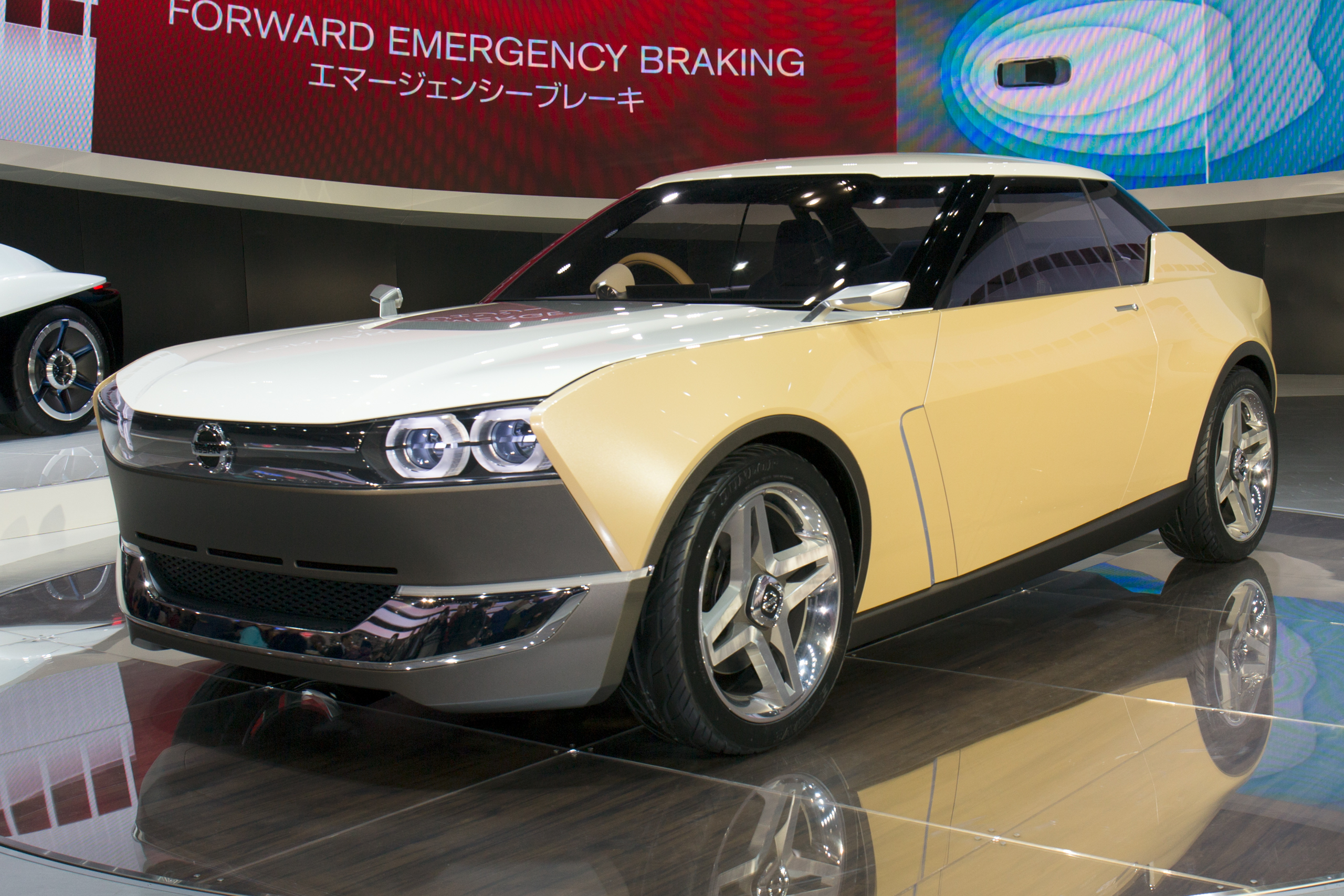
3. **Nissan IDx**The Nissan IDx, a sleek concept car that debuted at the Tokyo Motor Show in 2013, instantly turned heads and sparked widespread excitement. Conceived as a modern tribute to the beloved classic Datsun 510, it masterfully blended a retro aesthetic with a distinctly sporty flair, resonating deeply with a generation of driving enthusiasts who yearned for something different in a market increasingly dominated by conventional sedans and SUVs.
This rear-wheel-drive coupe promised an engaging and pure driving experience, characterized by a meticulous focus on lightweight design and elegant simplicity. Enthusiasts and journalists alike praised its potential, seeing it as a vehicle that could genuinely appeal to those who appreciated a more analogue and connected feel behind the wheel. The concept featured aggressive styling, racing-inspired elements, and bold red accents, making it instantly recognizable and desirable.
Regrettably, despite the overwhelmingly positive public interest and strong calls for its production, Nissan ultimately decided not to bring the IDx to fruition in 2015, leaving a legion of fans profoundly disappointed. A major obstacle, as an alleged Nissan engineer revealed, was the lack of a suitable and cost-effective rear-wheel-drive platform. Developing an entirely new one exclusively for this model proved too expensive to justify, highlighting the significant financial hurdles even the most beloved concepts face.
The IDx’s demise remains a significant ‘what could have been’ moment in Nissan’s design history, a powerful reminder that even compelling concepts with strong enthusiast appeal can be derailed by the cold realities of production costs and platform strategies. Its aerodynamic profile and distinctive look continue to be a benchmark for retro-futuristic design that never quite made it to mass production.
Read more about: Beyond the Showroom: Unveiling 14 Visionary Vehicle Prototypes That Never Saw Production

4. **1995 Ford GT90**Few concept cars have captured the imagination quite like the 1995 Ford GT90, a vehicle often heralded as one of the coolest and most audacious concepts ever created. Upon its debut, its sleek, angular design and overtly futuristic features were an immediate showstopper, signaling a bold vision for performance motoring from the Blue Oval. It was not merely a car; it was a statement, a tangible representation of Ford’s unbridled ambition.
Underneath its striking exterior, the GT90 packed an engineering marvel: a monstrous 6.0-liter V12 engine. This powerhouse was capable of producing an astonishing 600 horsepower, propelling the car from 0 to 60 mph in a blistering 3.6 seconds. This level of performance was groundbreaking for its time, positioning the GT90 as a true supercar slayer, even in concept form, built with a clear purpose: pure speed.
Despite its incredible specifications and widespread acclaim, the 1995 Ford GT90, to the dismay of many, never made it to production. Nevertheless, it remains a pivotal showcase of Ford’s forward-thinking vision for high-performance cars in the mid-1990s. Today, it stands as a hallmark of automotive innovation from that decade, a prized exhibit displayed at the Petersen Automotive Museum, continually inspiring awe and debate about the possibilities that might have been.
Read more about: Dream Machines That Never Drove Off the Drawing Board: Iconic Concept Cars That Missed Production
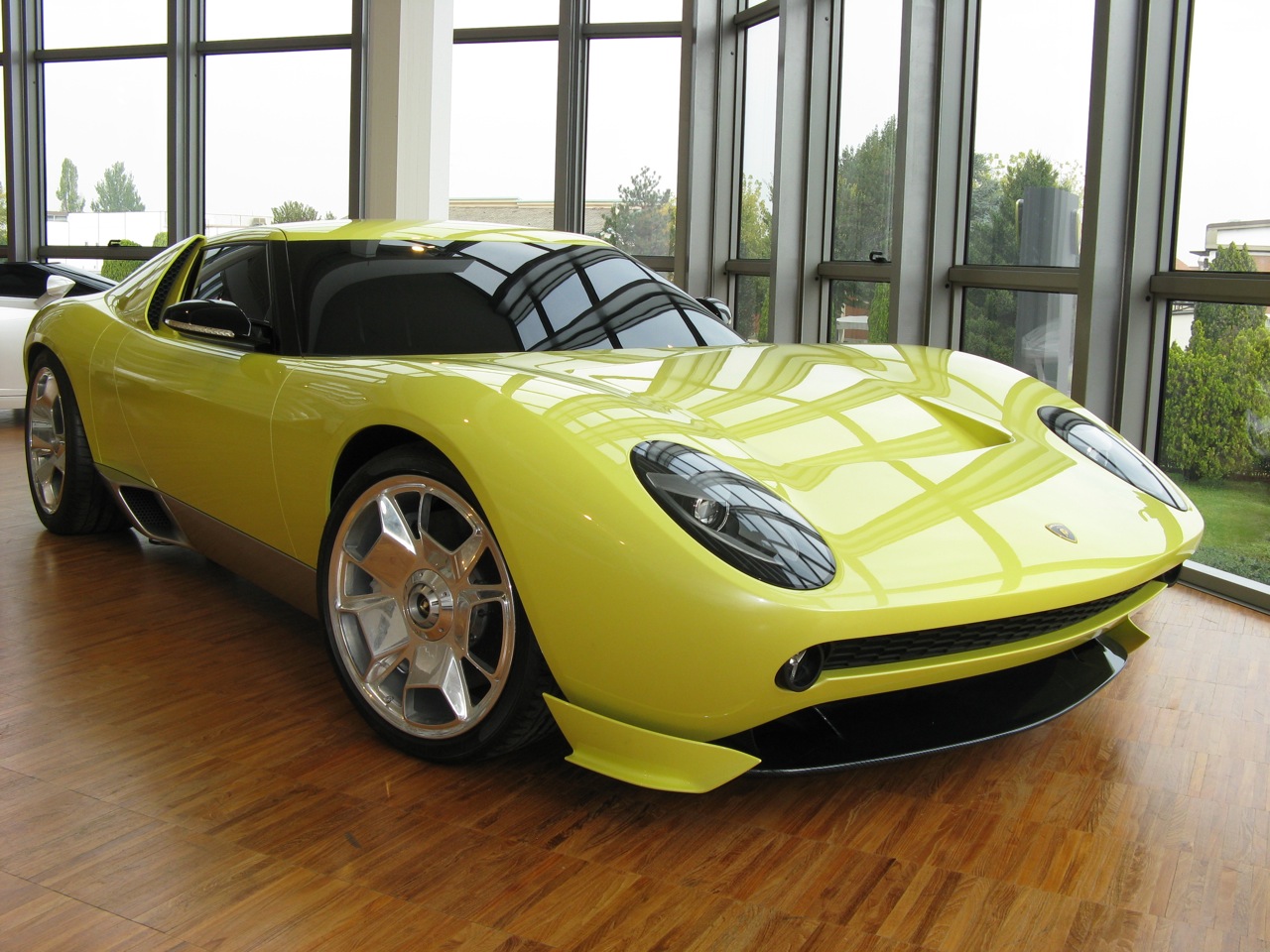
5. **2006 Lamborghini Miura**The 2006 Lamborghini Miura concept stands as a respectful and stunning homage to one of the most iconic supercars in automotive history, the original Miura from the 1960s. This modern reinterpretation blended the timeless elegance of its predecessor with contemporary design aggression, creating a vehicle that captivated enthusiasts and demonstrated Lamborghini’s ability to honor its heritage while looking to the future. Its sleek, powerful lines were instantly recognizable yet undeniably fresh.
You would immediately notice its stunning, flowing lines and the classic mid-engine layout, faithfully echoing its legendary forebear. The concept aimed to perfectly fuse blistering performance with uncompromised style, and while details were somewhat guarded, it was widely understood to house a powerful V10 engine, promising the exhilarating driving experience synonymous with the Lamborghini brand. It was more than just a car; it was a piece of art in motion.
While it never advanced beyond its concept stage to full production, the 2006 Miura concept continues to be a cherished memory among car enthusiasts, many of whom still reminisce about its immense potential. Some argue passionately that it possessed the power to revolutionize modern supercars, just as the original Miura did decades ago. This exquisite concept remains a favorite among fans and collectors alike, embodying the enduring spirit and visionary design philosophy of Lamborghini.
Read more about: Dust, Rust, and Riches: Unearthing the 15 Most Valuable Barn Finds in Automotive History

6. **2003 Cadillac Sixteen**The 2003 Cadillac Sixteen concept car made a spectacular debut, not merely as a new design study, but as a bold revival of Cadillac’s legendary V16 models from the 1930s. This modern interpretation captured the very essence of opulent American luxury, simultaneously showcasing a compelling vision for what could have become a new flagship model, asserting Cadillac’s ambition to compete at the very pinnacle of the global luxury automotive market.
At the heart of this imposing vehicle resided an engineering marvel: an enormous 13.6-liter aluminum V16 engine, a power plant capable of generating an astounding 1,000 horsepower. Remarkably, despite its colossal size, this engine was surprisingly light and featured advanced cylinder deactivation technology, allowing for improved fuel efficiency during less demanding driving conditions when its full, immense power wasn’t required. It was a testament to sophisticated, yet powerful, engineering.
The Sixteen’s exterior design was a masterclass in blending classic Cadillac styling cues with contemporary, futuristic touches. Its massive hood, perfectly sculpted proportions, and an imposing presence, accentuated by sharp lines and a distinctive grille, embodied what many automotive purists considered everything a true Cadillac should be: luxurious, powerful, and unashamedly American. It was a visual statement of intent.
Stepping inside the Sixteen revealed an interior that could rival the finest offerings from brands like Bentley, a sanctuary of handcrafted details and premium materials throughout. Every surface, every stitch, spoke of bespoke quality and meticulous attention to detail, creating a lavish and truly immersive driving experience. The cabin was a clear declaration of Cadillac’s vision for ultra-luxury transportation, pushing boundaries in comfort and refinement.
Despite its breathtaking design, innovative engineering, and enthusiastic reception, the Cadillac Sixteen regrettably never reached production. Economic factors and evolving market demands ultimately curtailed its journey from concept to reality. Nevertheless, it remains one of the most significant concept cars in Cadillac’s storied history, its influence visible in subsequent Cadillac designs, perpetually symbolizing what might have been for the American luxury brand.
Read more about: Revved Up and Reborn: 14 Legendary Vehicles That Roared Back to the Market with Unforgettable Style and Power
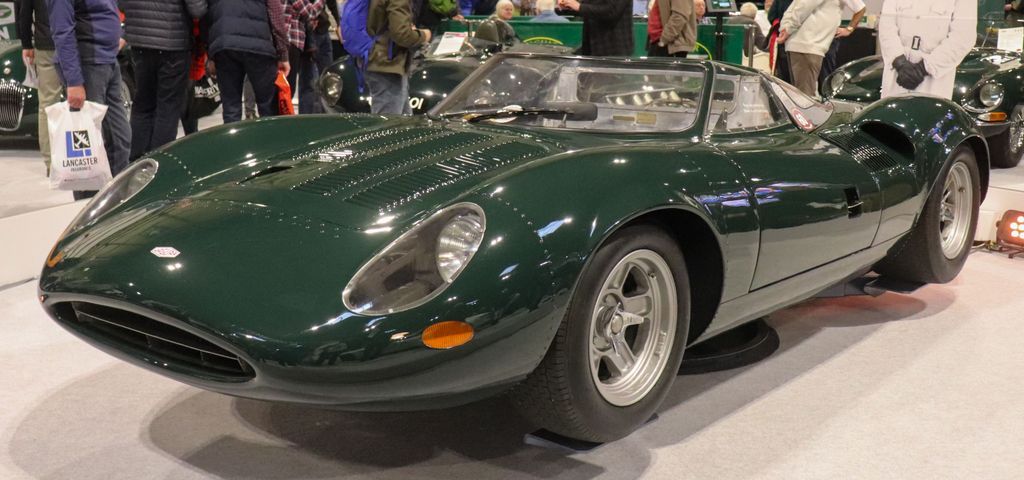
7. **Jaguar XJ13**The Jaguar XJ13 is not merely a prototype; it is a legendary artifact that perfectly encapsulates the fervent spirit of 1960s sports car racing. Developed in the mid-1960s under the expert guidance of Jaguar Engineering Director William Heynes, this magnificent vehicle was meticulously created with one singular, ambitious goal: to conquer the grueling endurance race at Le Mans. Its sleek body and powerful 5.0-liter V12 engine were designed for absolute victory.
Tragically, despite its formidable engineering and breathtaking aesthetics, the XJ13 never had the opportunity to prove its mettle on the hallowed tracks of Le Mans. Only one example of this extraordinary machine was ever built, cementing its status as an incredibly rare and almost mythical gem in automotive history. Its stunning lines and advanced engineering, especially for its era, represented what could have been a fierce and dominant competitor against the likes of Ferrari.
At the very core of the XJ13’s potency was its genuine Jaguar prototype V-12 engine, a remarkably exclusive power unit. These particular engines were extremely limited in number, with only six ever constructed specifically for this ambitious project, highlighting the bespoke and high-stakes nature of its development. Its distinctive mid-engine design and aerodynamically optimized body were truly cutting-edge for the period, pushing the boundaries of performance and form.
Though this singular car never saw the competitive track, its legacy lives on, a testament to unfulfilled potential. In recent years, the enduring mystique of this unraced wonder has inspired a number of passionate recreations, with some companies even developing limited-edition tribute cars that reimagine the XJ13’s evolution had it continued through racing seasons. It remains a powerful symbol of innovation, representing a tantalizing path not taken in Jaguar’s illustrious racing history, a ‘what if’ that continues to resonate deeply with enthusiasts.” , “_words_section1”: “1945
Read more about: Everyone Wants These 14 Classic Cars In Their Garage: A Deep Dive for Enthusiasts
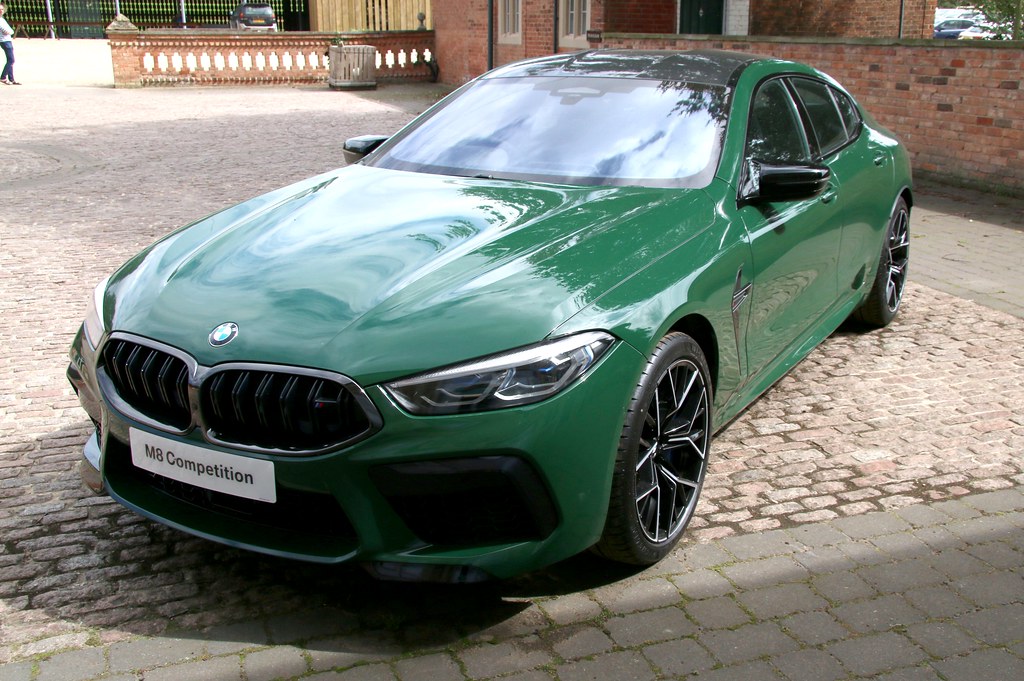
8. **BMW M8**The BMW M8 represents one of the most intriguing “what-if” scenarios in the annals of high-performance automotive design. Initially conceived and revealed in the early 1990s, this concept was envisioned as the ultimate high-performance variant of the already iconic 8 Series, a vehicle that itself pushed boundaries in luxury and grand touring. Its very existence hinted at BMW’s ambition to elevate its performance offerings to an even more exclusive echelon, directly challenging established supercar hierarchies.
At the core of the M8 concept’s appeal was the promise of a truly formidable powertrain. Enthusiasts would have experienced the raw, exhilarating power of a roaring V12 engine, meticulously engineered to deliver an astounding 550 horsepower. This immense output, combined with a sleek, aerodynamically optimized design, positioned the M8 to transcend its luxury sports car classification and truly compete among the top-tier performance machines of its era. It was a clear statement of intent, merging sophisticated elegance with brute force.
Regrettably, despite its immense potential and the undeniable excitement it generated, the BMW M8 never made the crucial leap from concept to full production. The decision to shelve the project left a significant void in BMW’s storied lineup, causing many car enthusiasts to ponder what an actual production M8 could have achieved. Its story remains a poignant reminder of the intricate balance between engineering ambition and the commercial realities that often dictate a vehicle’s fate, cementing its place as a symbol of unfulfilled potential in BMW’s history.
Car Model Information: 2024 BMW M8 Gran Coupe Competition
Name: BMW M8 (F91/F92/F93)
Manufacturer: BMW M
Production: July 2019–present
Assembly: BMW Group Plant Dingolfing
Designer: Marcus Syring, Jacek Pepłowski
Class: Grand tourer
BodyStyle: ubl
Related: BMW 8 Series (G14),BMW XM
Engine: BMW N63#S63B44T4
Transmission: ZF 8HP transmission,Automatic_transmission#Hydraulic_automatic_transmissions
Wheelbase: F91/F92: {{convert,2822,mm,0,abbr=on
Abbr: on
Length: unbulleted list
Width: {{convert,1907,-,1943,mm,in,1,abbr=on
Height: unbulleted list
Weight: unbulleted list
Predecessor: BMW M6#F06/F12/F13 M6 (2012–2018),BMW i8
ModelYears: 2019–present
Categories: Articles with short description, BMW vehicles, Cars introduced in 2019, Commons category link is on Wikidata, Convertibles
Summary: The BMW M8 is the high-performance version of the BMW 8 Series (G15) marketed under the BMW M sub-brand.
Introduced in June 2019, the M8 was initially produced in the 2-door convertible (F91 model code) and 2-door coupe (F92 model code) body styles. A 4-door sedan (F93 model code, marketed as ‘Gran Coupe’) body style was added to the lineup in October 2019. The M8 is powered by the BMW S63 twin-turbocharged V8 engine shared with the BMW M5 (F90).
Get more information about: BMW M8
Buying a high-performing used car >>>
Brand: BMW Model: M8
Price: $93,987 Mileage: 22,818 mi.
Read more about: 14 Track Titans That Absolutely Dominate the Competition: How Many of These Speed Demons Do YOU Know?
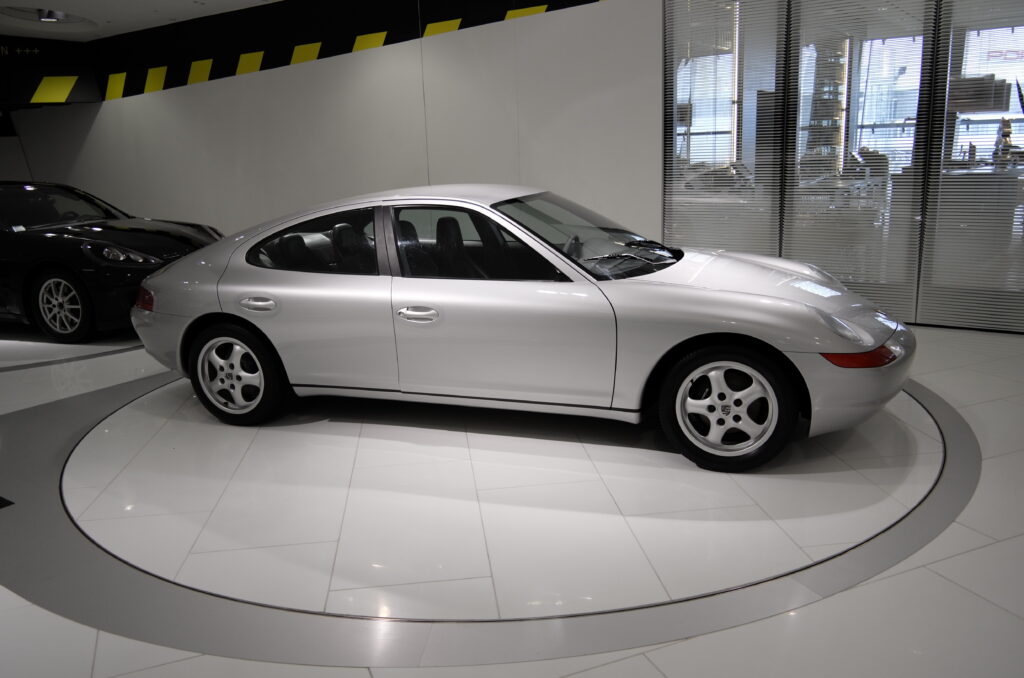
9. **Porsche 989**The Porsche 989 stands as a pivotal, albeit unproduced, concept in Porsche’s journey, marking an audacious attempt to broaden the marque’s traditional sports car-centric lineup. Designed in the late 1980s and refined until 1991, this innovative four-door sedan concept was a strategic move aimed at expanding Porsche’s market reach. It aimed to challenge luxury models from formidable competitors like the BMW 7 Series, offering a blend of Porsche’s renowned driving dynamics with enhanced practicality and passenger comfort.
The design of the 989 was a fascinating exploration of Porsche’s aesthetic language applied to a larger, more accommodating form. Its sleek lines and modern features were intended to project a sophisticated yet unmistakably Porsche presence, signaling the brand’s adaptability during what were financially challenging times for the company. This concept was not just about a new body style; it was about securing the brand’s future by tapping into a burgeoning luxury sedan market, providing a much-needed boost to sales and corporate stability.
While the Porsche 989 ultimately did not see the light of day as a production model, its influence is undeniable and profoundly felt in subsequent Porsche creations. The acclaimed Panamera, introduced years later, is widely regarded as the 989’s spiritual successor, directly drawing inspiration from its pioneering vision. The 989, therefore, represents a crucial foundational step, a “what could have been” that nevertheless laid essential groundwork for future Porsche innovations and a successful diversification of its esteemed vehicle portfolio.
Read more about: Dream Drives: 15 Classic Cars That Should Absolutely Be Revived for Today’s Roads

10. **Mercedes-Benz C112**The Mercedes-Benz C112 emerged as a truly fascinating concept car, immediately capturing attention upon its debut in the early 1990s. This audacious vehicle was not merely a design study but a profound exploration into the fusion of high performance and cutting-edge active aerodynamics. It showcased Mercedes-Benz’s relentless pursuit of engineering excellence and its vision for blending raw power with sophisticated control systems, pushing the boundaries of what a road car could achieve.
Underneath its strikingly sleek exterior, the C112 housed a formidable 6.0-liter V12 engine, a powerhouse capable of generating approximately 400 horsepower. This robust engine was paired with advanced active aerodynamic elements, meticulously crafted to optimize downforce and stability at high speeds. The C112 was designed to be a masterclass in blending performance and style, promising an unparalleled driving experience that married exhilarating speed with precision handling, all wrapped in a visually stunning package.
Unfortunately, despite its groundbreaking features and captivating design, this remarkable vehicle never transitioned to mass production. The C112’s journey ended at the concept stage, leaving automotive enthusiasts to ponder the sheer potential of what it could have become within the competitive world of supercars. Its legacy, however, is not one of failure, but rather a powerful testament to Mercedes-Benz’s innovative spirit and its continuous drive to explore the outer limits of automotive technology and design, inspiring engineers and designers for years to come.

11. **Jaguar XK180**In 1998, the Jaguar XK180 burst onto the scene as a truly stunning concept car, instantly commanding global attention with its aggressive stance and elegantly sleek design. Conceived as a modern tribute to the legendary Jaguar D-Type, it effortlessly captured the essence of classic British sports car pedigree while infusing it with contemporary flair and advanced engineering. Its powerful aesthetic was a clear statement of intent, showcasing Jaguar’s ambition to redefine its position in the high-performance segment.
Under the meticulously sculpted hood, the XK180 promised a visceral driving experience, powered by a supercharged V8 engine. This potent powertrain was engineered to propel the car to an impressive top speed of 180 mph, a performance benchmark that was truly exceptional for its time. Such capabilities, combined with its striking visual appeal, generated immense excitement among automotive aficionados and critics alike, positioning the XK180 as a potential icon, a vehicle that could have significantly reshaped the perception of Jaguar’s sporting prowess.
Despite the overwhelming hype and widespread anticipation surrounding its debut, the Jaguar XK180 regrettably never progressed beyond its conceptual stage to full production. The decision not to bring this magnificent machine to the streets left many fans of performance cars lamenting a missed opportunity. Even today, the XK180 remains a topic of passionate discussion, a cherished memory among enthusiasts who continue to speculate about the impact it could have made had it been unleashed onto the open road, forever embodying a captivating blend of heritage and unfulfilled modernity.
12. **Lamborghini Estoque**The Lamborghini Estoque, unveiled in 2008, marked a profoundly surprising and bold departure for the revered Italian automaker. Traditionally known for its dramatic, two-door supercars, the Estoque represented Lamborghini’s audacious foray into the four-door sedan market. This concept redefined the brand’s possibilities, offering a unique blend of practical luxury with a spacious interior and four full-sized seats, all while retaining the unmistakable, aggressive styling synonymous with Lamborghini.
Powering this groundbreaking sedan was the potent V10 engine, borrowed from the highly successful Gallardo, ensuring that the Estoque would deliver blistering performance worthy of the Raging Bull badge. Its sleek design skillfully adapted the brand’s iconic aesthetic to a longer wheelbase format, creating a visually imposing yet elegant vehicle. The Estoque aimed to enhance Lamborghini’s tradition with completely new versatility, allowing it to compete directly with other luxury sport sedans, most notably the Porsche Panamera, a growing segment at the time.
However, despite a largely positive reception and initial expectations that it would join Lamborghini’s lineup by 2012, the Estoque project was ultimately shelved. While no final decision on its production viability was publicly confirmed, the company indicated a strategic shift, choosing not to proceed with the car. This move left many to ponder the “what if” of a Lamborghini sedan, with some critics describing it as an answer to a question nobody asked, yet it remains one of the most intriguing and debated concept cars in the brand’s history, showcasing its willingness to explore new, unconventional territories.
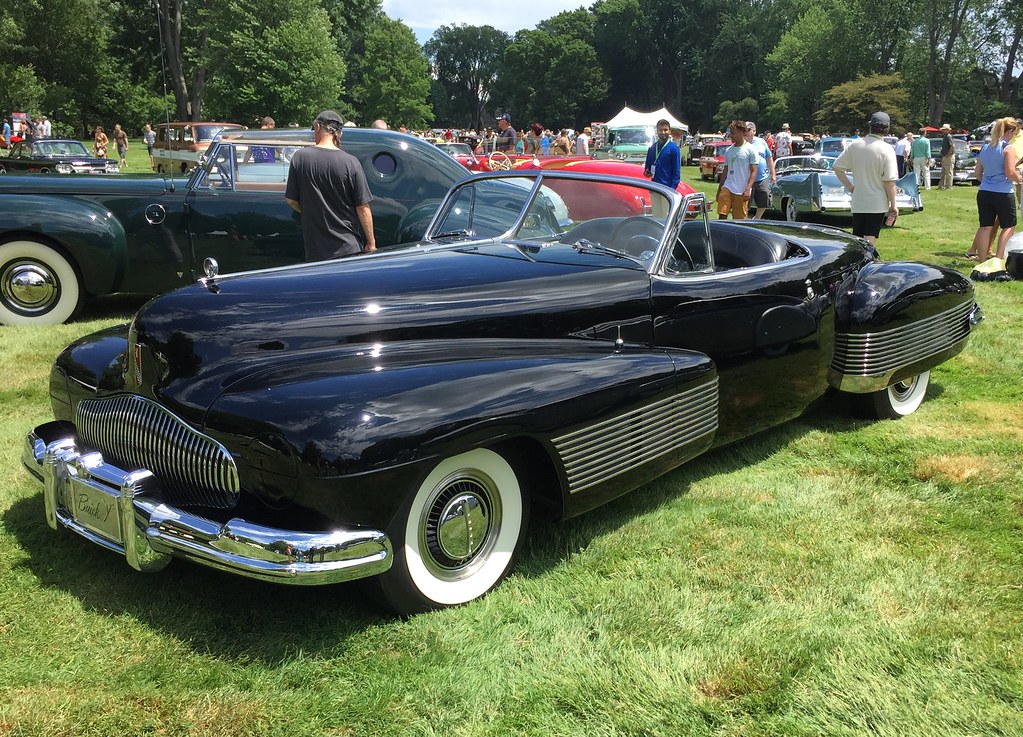
13. **Buick Y-Job**Holding a truly unique and significant place in automotive history, the Buick Y-Job stands proudly as the world’s very first concept car, making its groundbreaking debut in 1938. Conceived by the visionary Harley Earl, this revolutionary prototype was never intended for mass production. Instead, its singular purpose was to serve as a dazzling showcase for pioneering designs and cutting-edge technologies, fundamentally altering how automakers would approach future vehicle development and public engagement.
Earl, working with a limited budget but with full access to the extensive resources of General Motors, crafted a vehicle that was undeniably ahead of its time. The Y-Job featured numerous elements that were considered utterly futuristic for its era, including innovative hidden headlights and a distinctive, streamlined appearance that exuded modernity. From every angle, from its elegantly integrated bumpers to its gracefully flowing lines, the Y-Job was far more than mere transportation; it was a breathtaking piece of automotive sculpture.
Harley Earl didn’t just design the Y-Job; he actively drove it personally for many years, a testament to the concept’s surprising practicality despite its experimental nature. The enduring impact of this singular vehicle on automotive design cannot be overstated. It effectively established the concept car tradition that continues robustly today, where manufacturers habitually create visionary prototypes to test public reactions, explore new aesthetic directions, and ultimately shape the future of the automobile. The Y-Job remains a timeless emblem of innovation, forever symbolizing the genesis of automotive foresight and creative daring.
Read more about: Director’s Cut: 13 Concept Cars That Embody Steven Spielberg’s Visionary Future
These extraordinary concepts, from the sleek performance of the BMW M8 to the historical significance of the Buick Y-Job, collectively tell a compelling story of ambition, innovation, and the inherent challenges within the automotive industry. Each one, in its unique way, pushed the boundaries of design, engineering, and technological possibility, leaving an indelible mark on the collective imagination of enthusiasts. While they may not have graced our roads in their original forms, their spirit undeniably lives on, continuously inspiring the next generation of designers and engineers, shaping the cars we drive today and those we will marvel at tomorrow. They are not merely forgotten dreams, but powerful blueprints for the future, proving that even a concept that refuses to make it to production can forever redefine what is possible.




